
The black rhinoceros, black rhino or hook-lipped rhinoceros (Diceros bicornis) is a species of rhinoceros, native to eastern and southern Africa including Angola, Botswana, Kenya, Malawi, Mozambique, Namibia, South Africa, Eswatini, Tanzania, Zambia, and Zimbabwe. Although the rhinoceros is referred to as black, its colours vary from brown to grey.
The other African rhinoceros is the white rhinoceros (Ceratotherium simum). The word "white" in the name "white rhinoceros" is often said to be a misinterpretation of the Afrikaans word wyd (Dutch wijd)
meaning wide, referring to its square upper lip, as opposed to the
pointed or hooked lip of the black rhinoceros. These species are now
sometimes referred to as the square-lipped (for white) or hook-lipped
(for black) rhinoceros.[6]
The species overall is classified as critically endangered (even though the south-western black rhinoceros is classified as near threatened). Three subspecies have been declared extinct, including the western black rhinoceros, which was declared extinct by the International Union for Conservation of Nature (IUCN) in 2011.[7][8]

The species was first named
Rhinoceros bicornis by
Carl Linnaeus in the 10th edition of his
Systema naturae
in 1837. The name means "double-horned rhinoceros". There is some
confusion about what exactly Linnaeus conceived under this name as this
species was probably based upon the skull of a single-horned
Indian rhinoceros (
Rhinoceros unicornis), with a second horn artificially added by the collector. Such a skull is known to have existed and Linnaeus even mentioned
India
as origin of this species. However he also referred to reports from
early travellers about a double-horned rhino in Africa and when it
emerged that there is only one, single-horned species of rhino in India,
Rhinoceros" bicornis was used to refer to the African rhinos (the
white rhino only became recognised in 1812).
[9] In 1911 this was formally fixed and the
Cape of Good Hope officially declared the
type locality of the species.
[10]

Subspecies
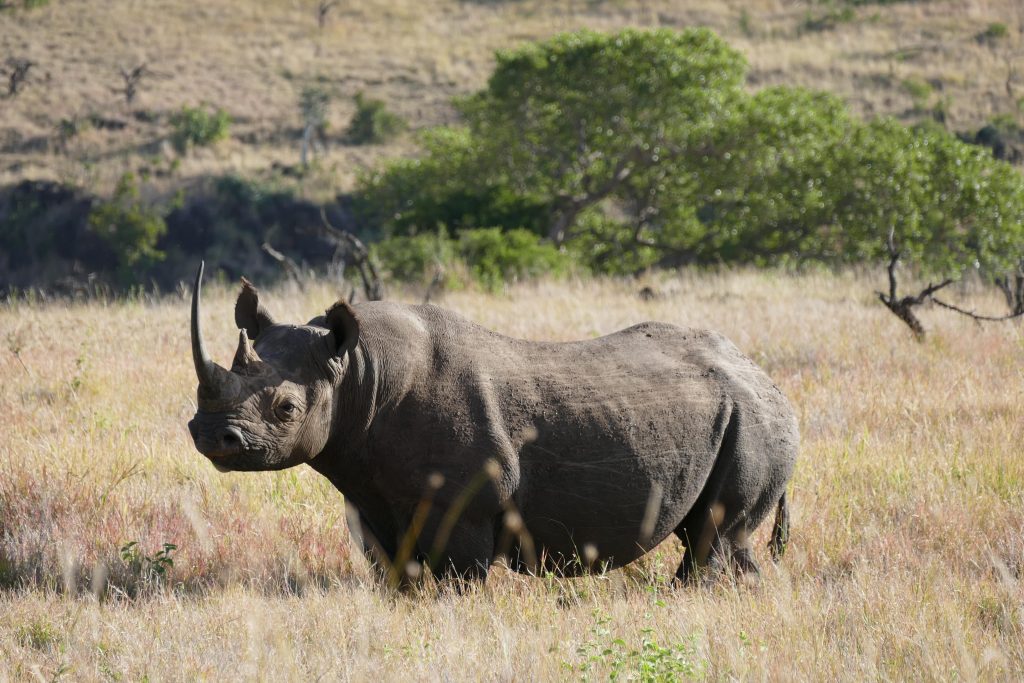
The intraspecific variation in the black rhinoceros has been discussed by various authors and is not finally settled.[11] The most accepted scheme considers seven or eight subspecies,[4][12][13] of which three became extinct in historical times and one is on the brink of extinction:
The most widely adopted alternative scheme only recognizes five subspecies or "eco-types": D. b. bicornis, D. b. brucii, D. b. longipes, D. b. michaeli, and D. b. minor.[17] This concept is also used by the IUCN, listing three surviving subspecies and recognizing D. b. brucii and D. b. longipes
as extinct. The most important difference to the above scheme is the
inclusion of the extant southwestern subspecies from Namibia in D. b. bicornis instead of in its own subspecies, whereupon the nominal subspecies is considered extant.[2]
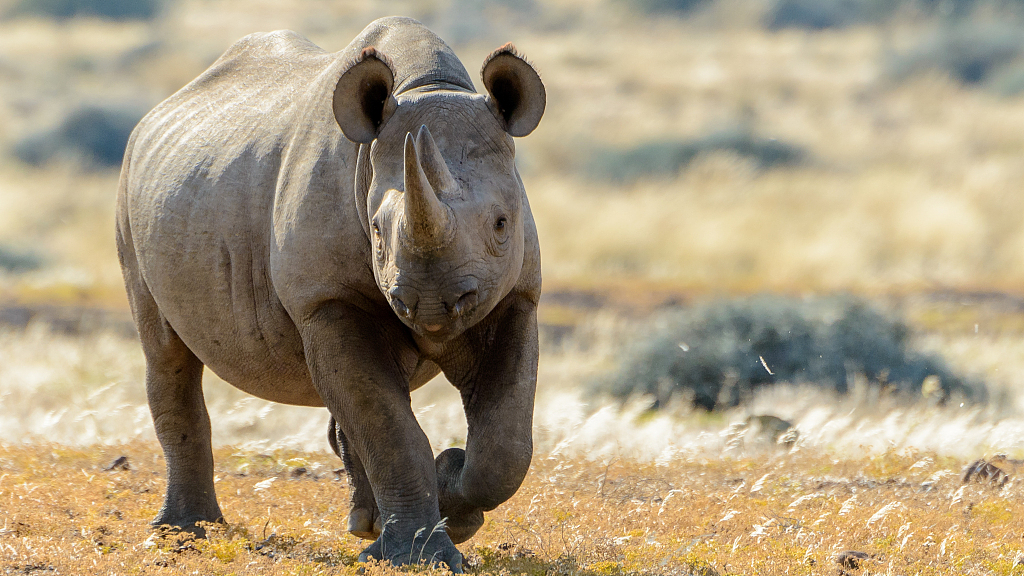
Evolution

The rhinoceros originated in the Eocene about fifty million years ago alongside other members of Perissodactyla.[18] Ancestors of the black and the white rhinoceros were present in Africa by the end of the Late Miocene about ten million years ago.[18] The two species evolved from the common ancestral species Ceratotherium neumayri during this time. The clade comprising the genus Diceros is characterised by an increased adaptation to browsing. Between four and five million years ago, the black rhinoceros diverged from the white rhinoceros.[18] After this split, the direct ancestor of Diceros bicornis, Diceros praecox was present in the Pliocene of East Africa (Ethiopia, Kenya, Tanzania). D. bicornis evolved from this species during the Late Pliocene – Early Pleistocene,[19] with the oldest definitive record at the Pliocene–Pleistocene boundary c. 2.5 million years ago at Koobi Fora, Kenya.[20]

Description
An adult black rhinoceros stands 140–180 cm (55–71 in) high at the shoulder and is 3–3.75 m (9.8–12.3 ft) in length.[21][22]
An adult typically weighs from 800 to 1,400 kg (1,760 to 3,090 lb),
however unusually large male specimens have been reported at up to
2,896 kg (6,385 lb).[4][21] The cows are smaller than the bulls. Two horns on the skull are made of keratin with the larger front horn typically 50 cm (20 in) long, exceptionally up to 140 cm (55 in).
The longest known black rhinoceros horn measured nearly 1.5 m (4.9 ft) in length.[23] Sometimes a third, smaller horn may develop.[24]
These horns are used for defense, intimidation, and digging up roots
and breaking branches during feeding. The black rhino is smaller than
the white rhino and close in size to the Javan rhino of Indonesia. It has a pointed and prehensile upper lip, which it uses to grasp leaves and twigs when feeding,[23]
whereas the white rhinoceros has square lips used for eating grass. The
black rhinoceros can also be distinguished from the white rhinoceros by
its size, smaller skull, and ears; and by the position of the head,
which is held higher than the white rhinoceros, since the black
rhinoceros is a browser and not a grazer.
Their thick-layered skin helps to protect black rhinos from thorns and sharp grasses. Their skin harbors external parasites, such as mites and ticks, which may be eaten by oxpeckers and egrets.[25] Such behaviour was originally thought to be an example of mutualism, but recent evidence suggests that oxpeckers may be parasites instead, feeding on rhino blood.[26]
It is commonly assumed that black rhinos have poor eyesight, relying
more on hearing and smell. However, studies have shown that their
eyesight is comparatively good, at about the level of a rabbit.[27]
Their ears have a relatively wide rotational range to detect sounds. An
excellent sense of smell alerts rhinos to the presence of predators.

Distribution

As
with many other components of the African large mammal fauna, black
rhinos probably had a wider range in the northern part of the continent
in prehistoric times than today. However this seems to have not been as
extensive as that of the white rhino. Unquestionable fossil remains have
not yet been found in this area and the abundant petroglyphs found across the Sahara desert are often too schematic to unambiguously decide whether they depict black or white rhinos. Petroglyphs from the Eastern Desert of southeastern Egypt relatively convincingly show the occurrence of black rhinos in these areas in prehistoric times.[28]

Historical and extant range

The natural range of the black rhino included most of southern and eastern Africa, but it did not occur in the Congo Basin, the tropical rainforest areas along the Bight of Benin, the Ethiopian Highlands, and the Horn of Africa.[4] Its former native occurrence in the extremely dry parts of the Kalahari desert of southwestern Botswana and northwestern South Africa is uncertain.[29] In western Africa it was abundant in an area stretching east to west from Eritrea and Sudan through South Sudan to southeastern Niger, and especially around Lake Chad. Its occurrence further to the west is questionable, though often purported to in literature.[5]
Today it is totally restricted to protected nature reserves
and has vanished from many countries in which it once thrived,
especially in the west and north of its former range. The remaining
populations are highly scattered. Some specimens have been relocated
from their habitat to better protected locations, sometimes across
national frontiers.[2] The black rhino has been successfully reintroduced to Malawi since 1993, where it became extinct in 1990.[30] Similarly it was reintroduced to Zambia (North Luangwa National Park) in 2008, where it had become extinct in 1998,[31] and to Botswana (extinct in 1992, reintroduced in 2003).[32]
In May 2017, 18 eastern black rhinos were translocated from South Africa to the Akagera National Park
in Rwanda. The park had around 50 rhinos in the 1970s but the numbers
dwindled to zero by 2007. In September 2017, the birth of a calf raised
the population to 19. The park has dedicated rhino monitoring teams to
protect the animals from poaching.[33][34]
In October 2017, The governments of Chad and South Africa reached
an agreement to transfer six black rhinos from South Africa to Zakouma National Park
in Chad. Once established, this will be the northernmost population of
the species. The species was wiped out from Chad in the 1970s and is
under severe pressure from poaching in South Africa. The agreement calls
for South African experts to assess the habitat, local management
capabilities, security and the infrastructure before the transfer can
take place.[35]

Behavior

Black rhinos are generally thought to be solitary, with the only
strong bond between a mother and her calf. In addition, bulls and cows
have a consort relationship during mating, also subadults and young
adults frequently form loose associations with older individuals of
either sex.[36] They are not very territorial
and often intersect other rhino territories. Home ranges vary depending
on season and the availability of food and water. Generally they have
smaller home ranges and larger density in habitats that have plenty of
food and water available, and vice versa if resources are not readily
available. Sex and age of an individual black rhino influence home range
and size, with ranges of cows larger than those of bulls, especially
when accompanied by a calf.[37] In the Serengeti home ranges are around 70 to 100 km2 (27 to 39 sq mi), while in the Ngorongoro it is between 2.6 to 58.0 km2 (1.0 to 22.4 sq mi).[36]
Black rhinos have also been observed to have a certain area they tend
to visit and rest frequently called "houses" which are usually on a high
ground level.[citation needed] These "home" ranges can vary from 2.6 km2 to 133 km2 with smaller home ranges having more abundant resources than larger home ranges.[38]
Black rhinos in captivity and reservations sleep patterns have
been recently studied to show that males sleep longer on average than
females by nearly double the time. Other factors that play a role in
their sleeping patterns is the location of where they decide to sleep.
Although they do not sleep any longer in captivity, they do sleep at
different times due to their location in captivity, or section of the
park.[39]
Black rhinos have a reputation for being extremely aggressive,
and charge readily at perceived threats. They have even been observed to
charge tree trunks and termite mounds.[citation needed]
Black rhinos will fight each other, and they have the highest rates of
mortal combat recorded for any mammal: about 50% of males and 30% of
females die from combat-related injuries.[40] Adult rhinos normally have no natural predators, thanks to their imposing size as well as their thick skin and deadly horns.[41] However, adult black rhinos have fallen prey to crocodiles in exceptional circumstances.[42] Calves and, very seldom, small sub-adults may be preyed upon by lions as well.[4]
Black rhinos follow the same trails that elephants use to get
from foraging areas to water holes. They also use smaller trails when
they are browsing. They are very fast and can get up to speeds of 55 kilometres per hour (34 mph) running on their toes.[43][44]
While it was assumed all rhinoceros are short-sighted, a study
involving black rhinoceros retinas suggests they have better eyesight
than previously assumed.[45]

Diet

Black rhinos are herbivorous browsers that eat leafy plants, branches, shoots, thorny wood bushes, and fruit.[46]
The optimum habitat seems to be one consisting of thick scrub and
bushland, often with some woodland, which supports the highest
densities. Their diet can reduce the amount of woody plants, which may
benefit grazers (who focus on leaves and stems of grass), but not
competing browsers (who focus on leaves, stems of trees, shrubs or
herbs). It has been known to eat up to 220 species of plants. They have a
significantly restricted diet with a preference for a few key plant
species and a tendency to select leafy species in the dry season.[47]
The plant species they seem to be most attracted to when not in dry
season are the woody plants. There are 18 species of woody plants known
to the diet of the black rhinoceros, and 11 species that could possibly
be a part of their diet too.[48]
Black rhinos also have a tendency to choose food based on quality over
quantity, where researchers find more populations in areas where the
food has better quality.[49]
In accordance with their feeding habit, adaptations of the chewing
apparatus have been described for rhinos. The black rhinoceros has a
twophased chewing activity with a cutting ectoloph and more grinding
lophs on the lingual side. The black rhinoceros can also be considered a
more challenging herbivore to feed in captivity compared to its grazing
relatives.[50]
They can live up to 5 days without water during drought. Black rhinos
live in several habitats including bushlands, Riverine woodland,
marshes, and their least favorable, grasslands. Habitat preferences are
shown in two ways, the amount of sign found in the different habitats,
and the habitat content of home ranges and core areas. Habitat types are
also identified based on the composition of dominant plant types in
each area. Different subspecies live in different habitats including Vachellia and Senegalia savanna, Euclea bushlands, Albany thickets, and even desert.[36]
They browse for food in the morning and evening. They are selective
browsers but, studies done in Kenya show that they do add the selection
material with availability in order to satisfy their nutritional
requirements.[51]
In the hottest part of the day they are most inactive- resting,
sleeping, and wallowing in mud. Wallowing helps cool down body
temperature during the day and protects against parasites. When black
rhinos browse they use their lips to strip the branches of their leaves.
Competition with elephants is causing the black rhinoceros to shift its
diet. The black rhinoceros alters its selectivity with the absence of
the elephant.[52]
There is some variance in the exact chemical composition of
rhinoceros horns. This variation is directly linked to diet and can be
used as a means of rhino identification. Horn composition has helped
scientists pinpoint the original location of individual rhinos, allowing
for law enforcement to more accurately and more frequently identify and
penalize poachers.[53]

Communication
Black rhinos use several forms of communication. Due to their solitary nature, scent marking is often used to identify themselves to other black rhinos. Urine spraying
occurs on trees and bushes, around water holes and feeding areas. Cows
urine spray more often when receptive for breeding. Defecation sometimes
occurs in the same spot used by different black rhinos, such as around
feeding stations and watering tracks. Coming upon these spots, rhinos
will smell to see who is in the area and add their own marking. When
presented with adult feces, bulls and cows respond differently than when
they are presented with subadult feces. The urine and feces of one
black rhinoceros helps other black rhinoceroses to determine its age,
sex, and identity.[54] Less commonly they will rub their heads or horns against tree trunks to scent-mark.
The black rhino has powerful tube-shaped ears that can freely
rotate in all directions. This highly developed sense of hearing allows
black rhinos to detect sound over vast distances.[55]

Reproduction
Mother and calf in Lewa, central Kenya
The adults are solitary in nature, coming together only for mating.
Mating does not have a seasonal pattern but births tend to be towards
the end of the rainy season in more arid environments.
When in season the cows will mark dung piles. Bulls will follow
cows when they are in season; when she defecates he will scrape and
spread the dung, making it more difficult for rival adult bulls to pick
up her scent trail.
Courtship behaviors before mating include snorting and sparring
with the horns among males. Another courtship behavior is called bluff
and bluster, where the black rhino will snort and swing its head from
side to side aggressively before running away repeatedly. Breeding pairs
stay together for 2–3 days and sometimes even weeks. They mate several
times a day over this time and copulation lasts for a half-hour.
The gestation period for a black rhino is 15 months. The single
calf weighs about 35–50 kilograms (80–110 lb) at birth, and can follow
its mother around after just three days. Weaning occurs at around 2
years of age for the offspring. The mother and calf stay together for
2–3 years until the next calf is born; female calves may stay longer,
forming small groups. The young are occasionally taken by hyenas and lions.
Sexual maturity is reached from 5 to 7 years old for females, and 7 to 8
years for males. The life expectancy in natural conditions (without poaching pressure) is from 35 to 50 years.[56]

Conservation
For most of the 20th century the continental black rhino was the most
numerous of all rhino species. Around 1900 there were probably several
hundred thousand[2] living in Africa. During the latter half of the 20th century their numbers were severely reduced from an estimated 70,000[57]
in the late 1960s to only 10,000 to 15,000 in 1981. In the early 1990s
the number dipped below 2,500, and in 2004 it was reported that only
2,410 black rhinos remained. According to the International Rhino Foundation—housed in Yulee, Florida at White Oak Conservation, which breeds black rhinos[58]—the total African population had recovered to 4,240 by 2008 (which suggests that the 2004 number was low).[59] By 2019 the population of 5,500 was either steady or slowly increasing.[60]
In 1992, nine black rhinos were brought from Chete National Park,
Zimbabwe to Australia via Cocos Island. After the natural deaths of the
males in the group, four males were brought in from United States and
have since adapted well to captivity and new climate.[61] Calves and some subadults are preyed on by lions, but predation is rarely taken into account in managing the black rhinoceros.[citation needed]
This is a major flaw because predation should be considered when
attributing cause to the poor performance of the black rhinoceros
population.[62]
In 2002 only ten western black rhinos remained in Cameroon, and in 2006
intensive surveys across its putative range failed to locate any,
leading to fears that this subspecies had become extinct.[16] In 2011 the IUCN declared the western black rhino extinct.[63]
There was a conservation effort in which black rhinos were
translocated, but their population did not improve, as they did not like
to be in an unfamiliar habitat.
Under CITES Appendix I all international commercial trade of the black rhino horn is prohibited since 1977.[38] China though having joined CITES since 8 April 1981 is the largest importer of black rhino horns.[64][citation needed]
However, this is a trade in which not only do the actors benefit, but
so do the nation states ignoring them as well. Nevertheless, people
continue to remove the rhino from its natural environment and allow for a
dependence on human beings to save them from endangerment.[65]
Parks and reserves have been made for protecting the rhinos with armed
guards keeping watch, but even still many poachers get through and harm
the rhinos for their horns. Many have considered extracting rhino horns
in order to deter poachers from slaughtering these animals or
potentially bringing them to other breeding grounds such as the US and
Australia.[65]
This method of extracting the horn, known as dehorning, consists of
tranquilizing the rhino then sawing the horn almost completely off to
decrease initiative for poaching, although the effectiveness of this in
reducing poaching is not known and rhino mothers are known to use their
horns to fend off predators.[66]
The only rhino subspecies that has recovered somewhat from the brink of extinction is the southern white rhinoceros, whose numbers now are estimated around 14,500, up from fewer than 50 in the first decade of the 20th century.[67]
But there seems to be hope for the black rhinoceros in recovering their
gametes from dead rhinos in captivity. This shows promising results for
producing black rhinoceros embryos, which can be used for testing sperm
in vitro.[68]
A January 2014 auction for a permit to hunt a black rhinoceros in Namibia
sold for $350,000 at a fundraiser hosted by the Dallas Safari Club. The
auction drew considerable criticism as well as death threats directed
towards members of the club and the man who purchased the permit.[69]
This permit was issued for 1 of 18 black rhinoceros specifically
identified by Namibia's Ministry of Environment and Tourism as being
past breeding age and considered a threat to younger rhinos. The
$350,000 that the hunter paid for the permit was used by the Namibian
government to fund anti-poaching efforts in the country.[70]
In 2022 South Africa granted permits to hunt 10 black rhinos stating population is growing.[71]

Threats

Today,
there are various threats posed to black rhinos including habitat
changes, illegal poaching, and competing species. Civil disturbances,
such as war, have made mentionably negative effects on the black
rhinoceros populations in since the 1960s in countries including, but
not limited to, Chad, Cameroon, Rwanda, Mozambique, and Somalia.[2] In the Addo Elephant National Park in South Africa, the African bush elephant (Loxodonta africana)
is posing slight concern involving the black rhinoceroses who also
inhabit the area. Both animals are browsers; however, the elephant's
diet consists of a wider variety of foraging capacity, while the black
rhinoceros primarily sticks to dwarf shrubs. The black rhinoceros has
been found to eat grass as well; however, the shortening of its range of
available food could be potentially problematic.[72]
Black rhinos face problems associated with the minerals they
ingest. They have become adjusted to ingesting less iron in the wild due
to their evolutionary progression, which poses a problem when placed in
captivity. These rhinoceroses can overload on iron, which leads to
build up in the lungs, liver, spleen and small intestine.[73]
Not only do these rhinoceros face threats being in the wild, but in
captivity too. Black rhinoceros have become more susceptible to disease
in captivity with high rates of mortality.[68]
Illegal poaching for the international rhino horn trade is the main and most detrimental threat.[2]
The killing of these animals is not unique to modern-day society. The
Chinese have maintained reliable documents of these happenings dating
back to 1200 B.C.[74]
The ancient Chinese often hunted rhino horn for the making of wine
cups, as well as the rhino's skin to manufacture imperial crowns, belts
and armor for soldiers.[74] A major market for rhino horn has historically been in the Middle East nations to make ornately carved handles for ceremonial daggers called jambiyas.
Demand for these exploded in the 1970s, causing the black rhinoceros
population to decline 96% between 1970 and 1992. The horn is also used
in traditional Chinese medicine, and is said by herbalists to be able to revive comatose patients, facilitate exorcisms and various methods of detoxification, and cure fevers.[74]
It is also hunted for the Chinese superstitious belief that the horns
allow direct access to Heaven due to their unique location and hollow
nature.[74]
The purported effectiveness of the use of rhino horn in treating any
illness has not been confirmed, or even suggested, by medical science.
In June 2007, the first-ever documented case of the medicinal sale of
black rhino horn in the United States (confirmed by genetic testing of
the confiscated horn) occurred at a traditional Chinese medicine supply store in Portland, Oregon's Chinatown.[75]

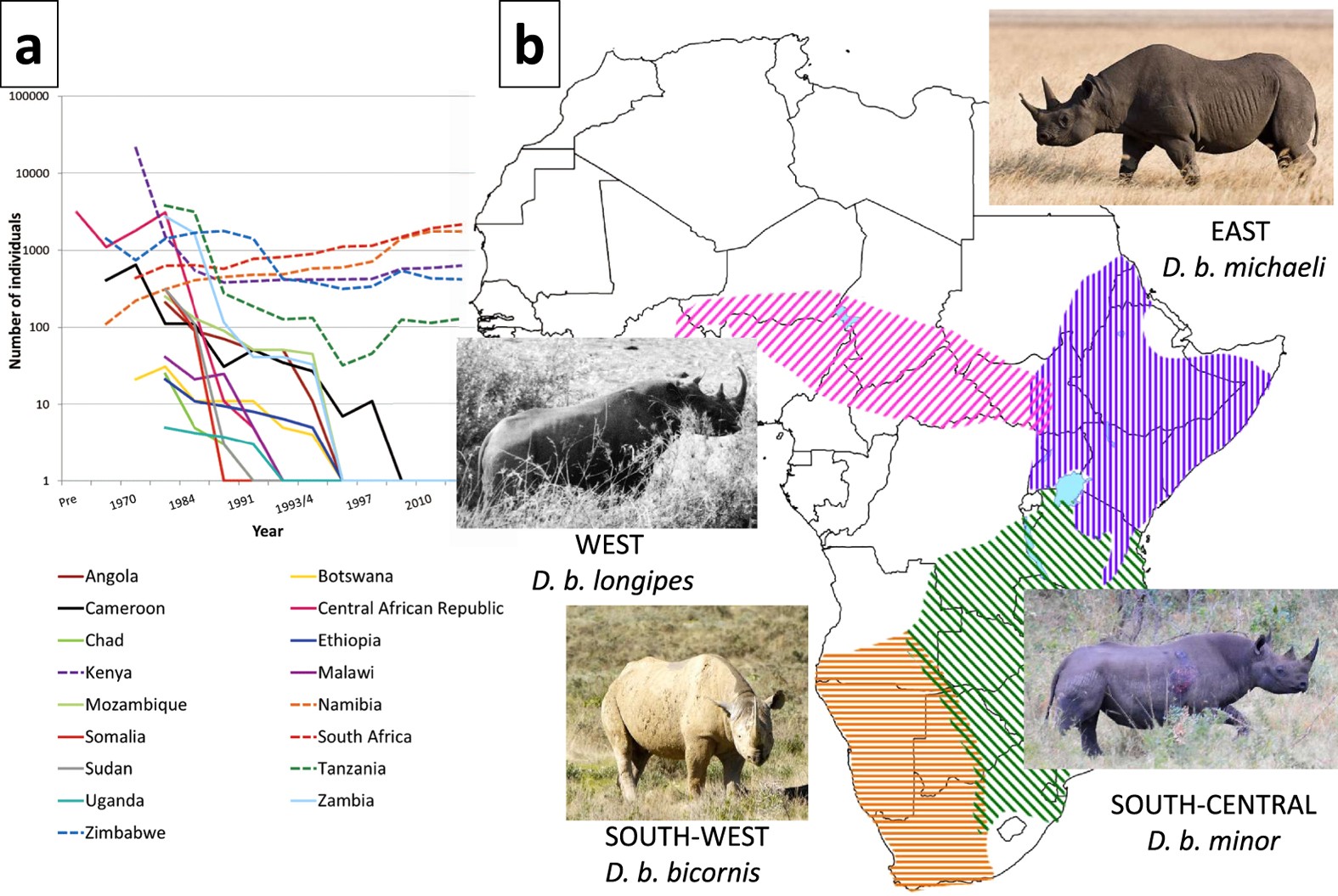
Binomial name
Diceros bicornis

Current black rhinoceros range
Extant, resident
Extinct
Extant & Reintroduced (resident)
Extant & Assisted Colonisation (resident)



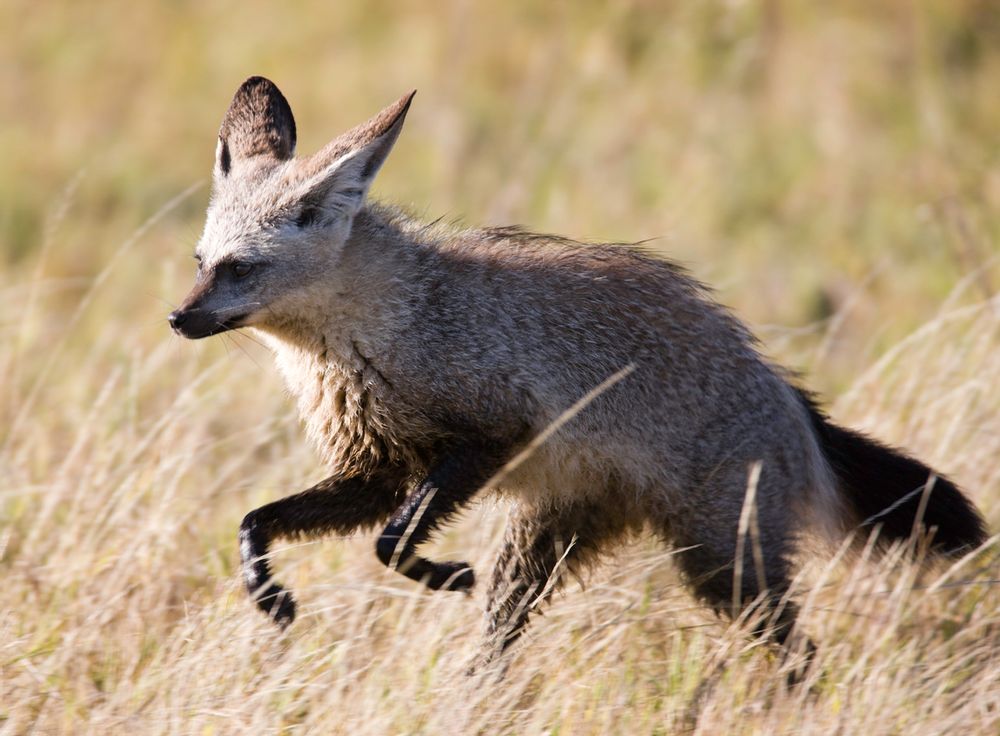


















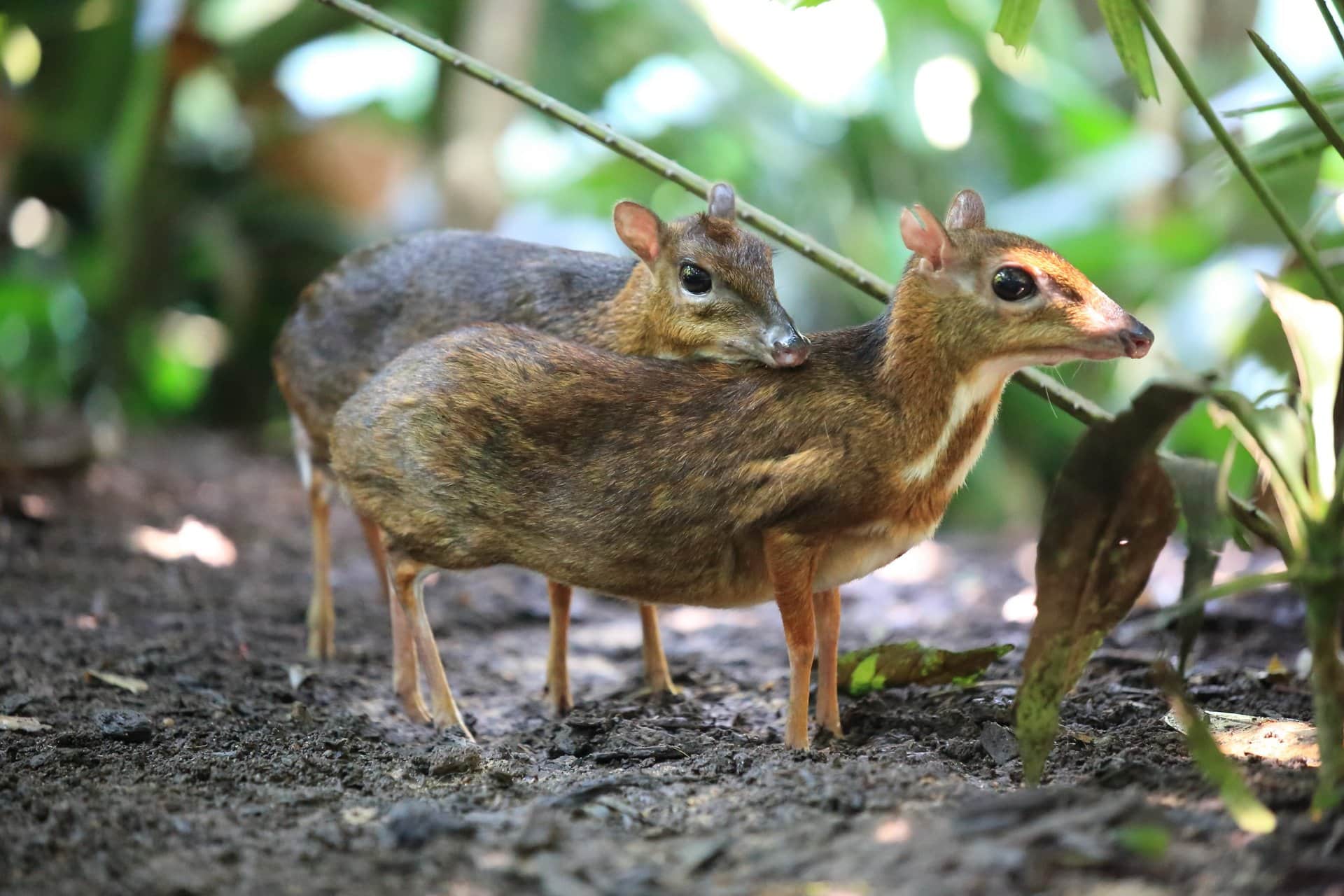


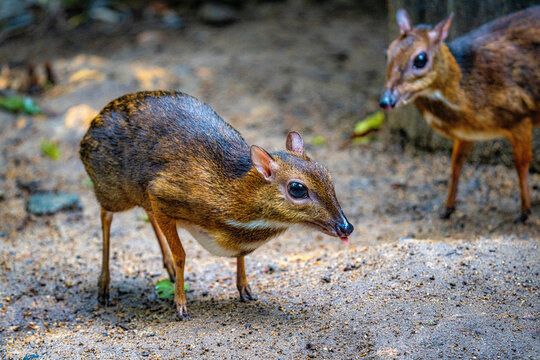







/https://tf-cmsv2-smithsonianmag-media.s3.amazonaws.com/filer_public/35/12/351213f9-270a-4b2e-aed8-08fc687645fb/gettyimages-1288715529.jpg)




































